Introduction
Cloud automation and orchestration are pivotal in the modern IT landscape, transforming how organizations manage and deploy their resources. The article delves into the intricacies of cloud automation, highlighting its ability to enhance operational efficiency and minimize human error. By leveraging advanced automation tools, businesses can not only streamline routine tasks but also focus on driving innovation and growth.
The discussion extends to cloud orchestration, emphasizing its role in integrating and managing automated tasks across diverse environments to ensure seamless cooperation among services and resources. Real-world examples, such as those from Specsavers and Chess.com, illustrate the tangible benefits and strategic importance of these technologies. Furthermore, the article explores the key components and best practices of cloud orchestration, offering insights into how organizations can effectively implement these strategies to maximize their return on investment and foster a more agile and responsive IT infrastructure.
As cloud computing continues to evolve, understanding and adopting these advanced technologies is essential for maintaining a competitive edge in the digital era.
Understanding Cloud Automation
'Automation utilizes technology to automatically create, configure, and manage resources, significantly enhancing operational efficiency and reducing human error.'. By employing automation tools, organizations can rapidly deploy applications and services while maintaining stringent control over their resources. 'This automation not only streamlines routine tasks but also enables organizations to pivot their focus towards strategic initiatives, driving innovation and growth.'. Based on a recent report, the actual worth of digital services resides in improving IT efficiency, encouraging organizational innovation, and incorporating advanced technologies such as generative AI to optimize return on investment. A case in point is Specsavers, which has developed in-house technologies to navigate the complexities of their global supply chain and optometry equipment. This approach emphasizes the significance of aligning investments in technology with business goals to realize the full potential of technology adoption.
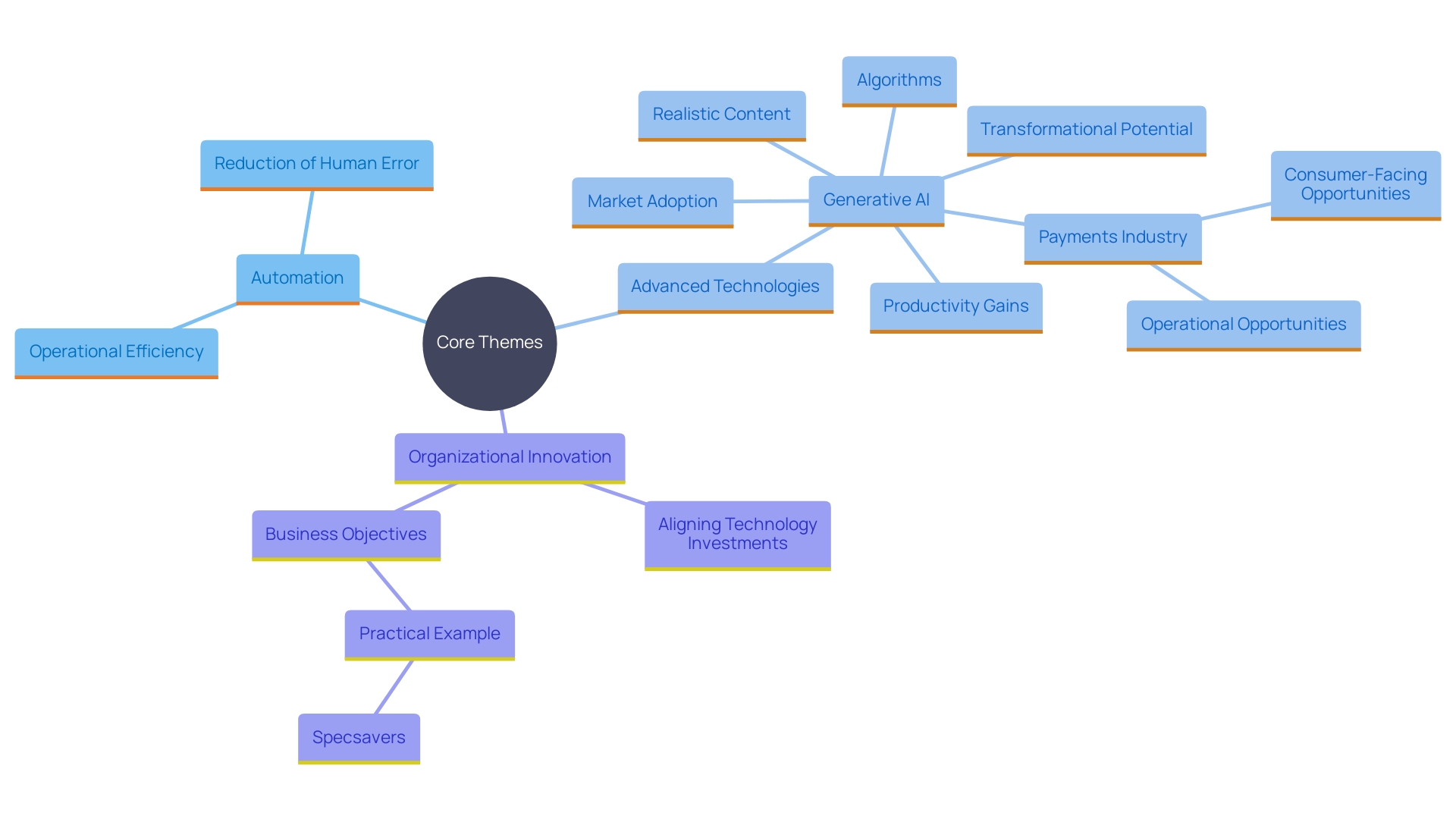
What is Cloud Orchestration?
The management of automated tasks across different online environments involves their integration, ensuring smooth collaboration among various services and resources. This process allows for the automation of workflows and the management of interdependencies between services, fostering a more agile and responsive IT infrastructure. For organizations employing multiple online environments or hybrid approaches, management of resources is essential.
A significant instance of successful online resource management is observed in Chess.com. Serving a vibrant community of over 150 million users and hosting more than ten million chess games daily, Chess.com relies on a robust IT infrastructure that encompasses public networks and on-premises solutions. James Kelty, Head of Infrastructure at Chess.com, highlights the importance of integrating these diverse environments to maintain the platform's stability and scalability. By utilizing online management tools, Chess.com effectively handles its infrastructure requirements, guaranteeing a seamless and pleasant experience for users globally.
The worldwide computing market is anticipated to increase at a compound annual growth rate (CAGR) of more than 18%, achieving an estimated worth of $723.4 billion by 2023. This growth is driven by the seamless integration of IoT devices, the rising demand for AI, and the widespread adoption of microservices architecture and DevOps models. 'Cloud management plays a crucial role in this expansion by enabling organizations to streamline their IT operations and foster innovation, ultimately maximizing their return on investment.'.
Gartner highlights that many companies face challenges with digital initiatives due to a lack of coordination between on-premises and online systems and the absence of a cohesive strategic vision. Efficient management of distributed resources tackles these challenges by offering a centralized method to oversee resources, guaranteeing that all elements function together seamlessly to accomplish business objectives.
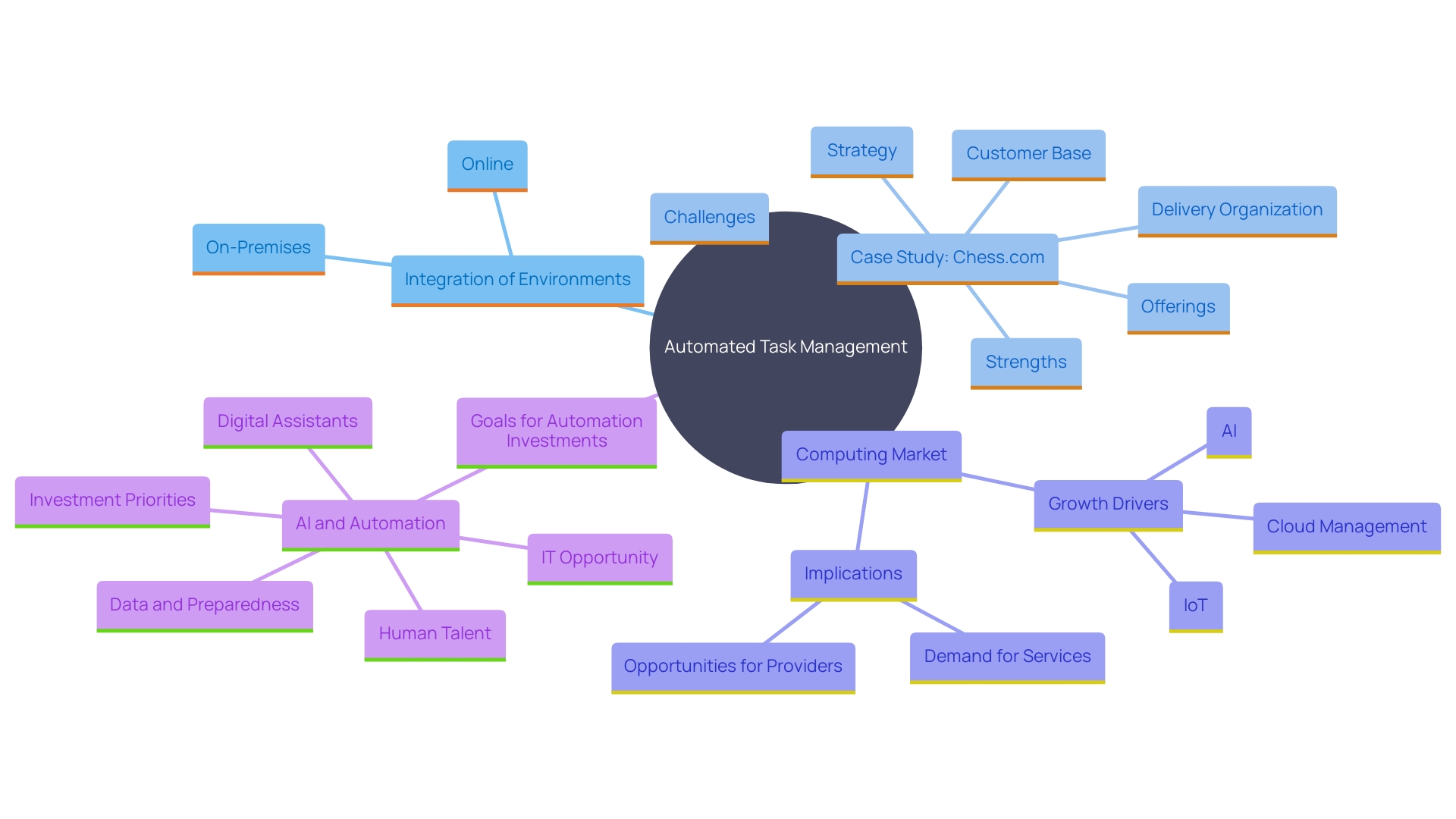
Key Components of Cloud Orchestration
The essential components of online orchestration encompass service provisioning, configuration management, workload management, and monitoring. Service provisioning automates the deployment of resources, ensuring scalability and efficiency. This is exemplified by Amazon S3, which handles over 350 trillion objects and processes more than 100 million data requests per second. Configuration management guarantees that all systems are correctly set up and compliant with standards, a critical aspect in highly regulated industries like healthcare and e-commerce.
Workload management dynamically allocates resources based on demand, optimizing performance and cost-efficiency. For instance, AWS Supply Chain's new capabilities help organizations forecast and replenish products, reducing inventory costs and responding swiftly to market demands. Monitoring provides real-time insights into system performance and availability, similar to Bosch's digital twin for their solid oxide fuel cell system, which visualizes and optimizes process parameters and state-of-health data.
Together, these components create a robust framework for managing virtual environments, enabling businesses to maximize the benefits of computing, such as increased productivity, cost savings, and improved collaboration. The adoption of advanced technologies such as IoT, AI, and 5G, propelled by the swift digital transformation across sectors, further emphasizes the significance of efficient strategies for managing resources.
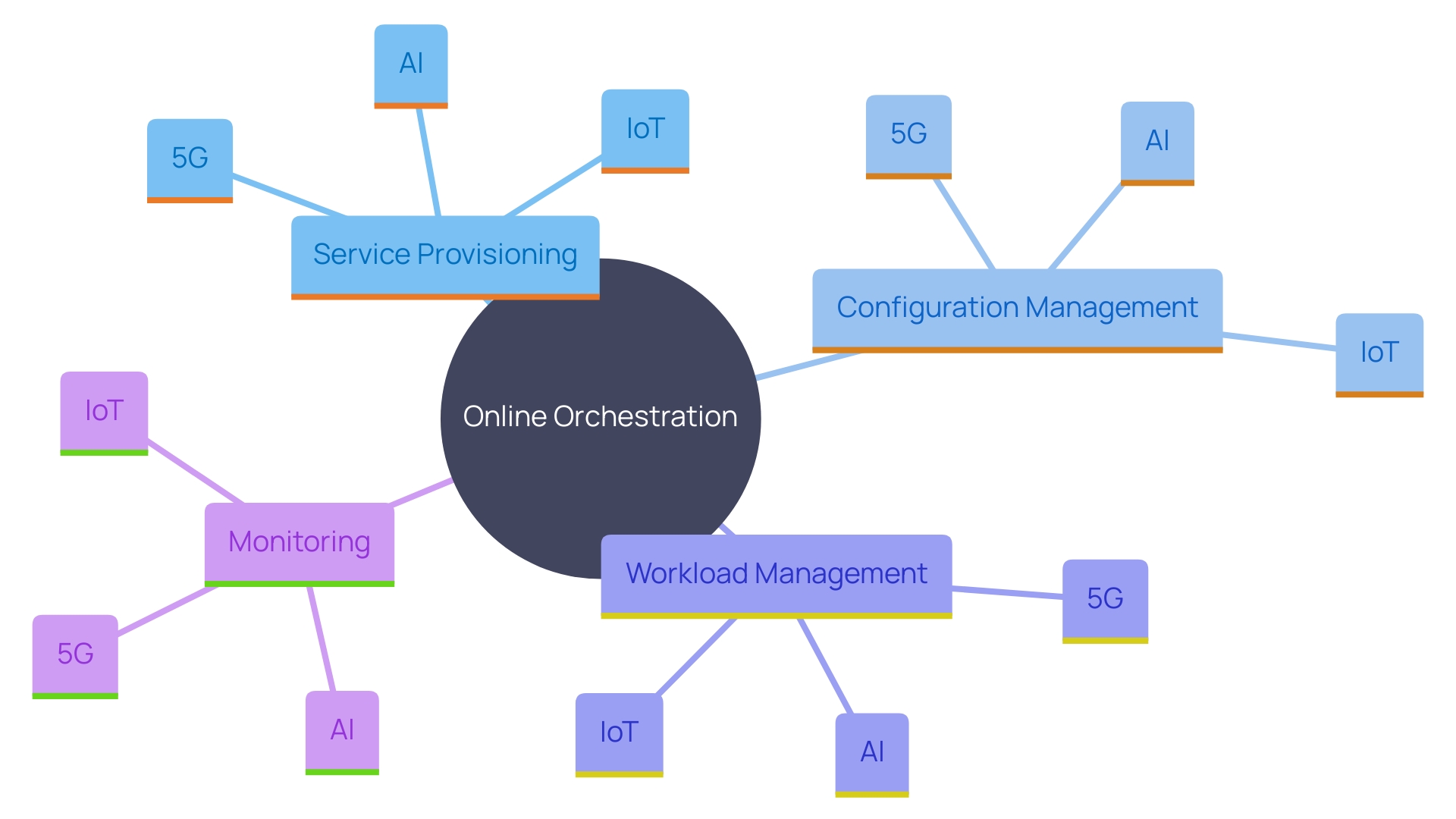
Benefits of Cloud Orchestration
Cloud management significantly improves resource utilization, operational efficiency, and speeds up time-to-market for applications. Automating complex processes reduces manual intervention, leading to fewer errors and greater consistency. For instance, Chess.com, which hosts more than ten million chess matches each day and caters to a community of over 150 million users, depends on an advanced IT infrastructure that integrates public and on-site solutions. This setup, as explained by James Kelty, Head of Infrastructure at Chess.com, allows the company to scale efficiently and deliver a seamless experience to users worldwide. Similarly, Delivery Hero, operating in over 70 countries with more than 53,000 employees, faced challenges with account lockouts. By automating the recovery process, they significantly reduced downtime, enabling employees to return to work faster. Managing resources in a networked environment also facilitates improved scalability, allowing companies to react rapidly to evolving needs while optimizing resource expenses. According to market reports, the computing market size was valued at $723.4 billion in 2023 and is expected to grow at a CAGR of over 18%, driven by factors such as AI, IoT integration, and the adoption of microservices architecture.
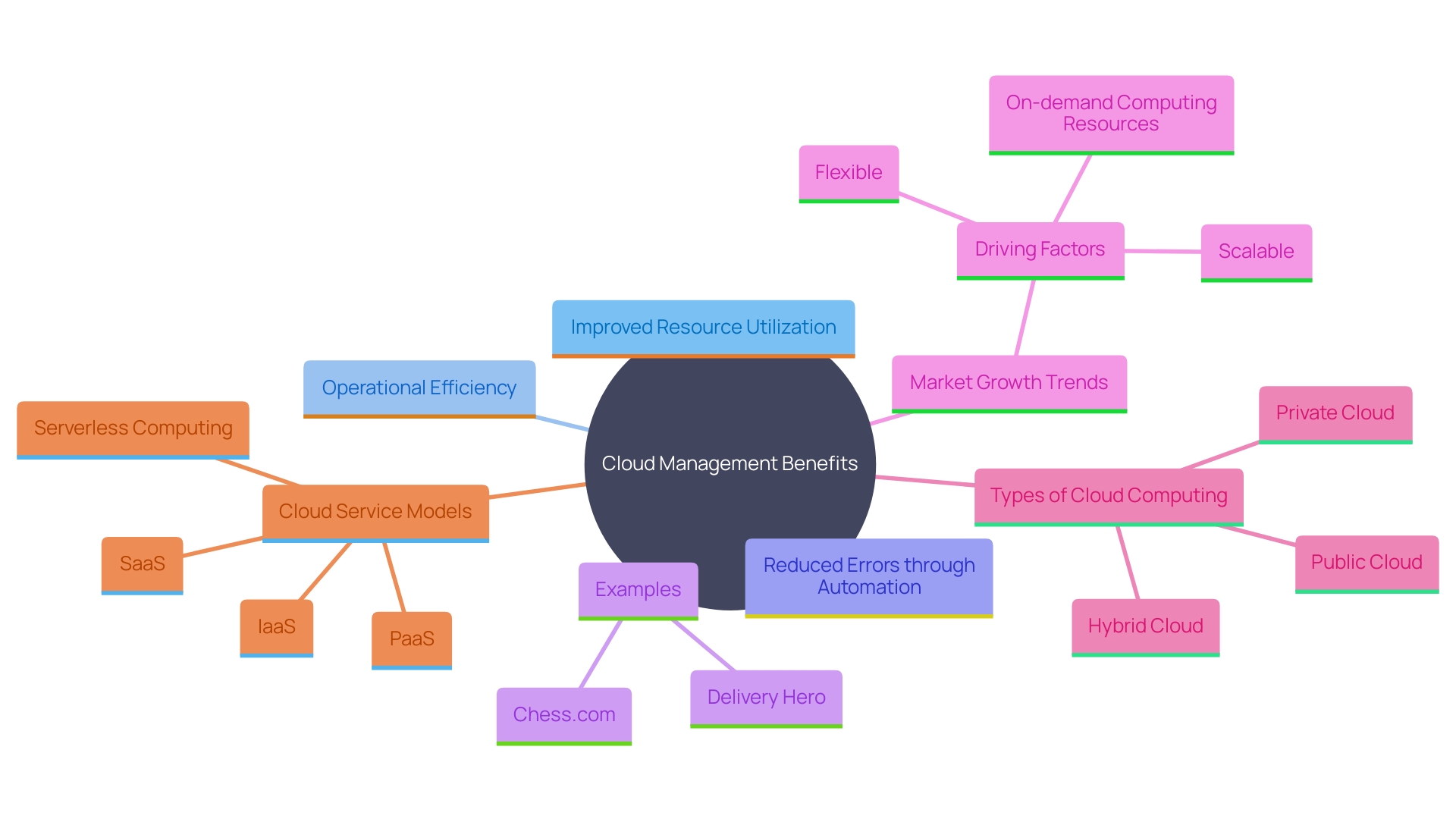
Strategies for Implementing Cloud Orchestration
To successfully implement cloud management, organizations must develop a comprehensive strategy that begins with clearly defined objectives and a thorough assessment of the existing infrastructure. Selecting the right tools is crucial, and businesses should focus on integrations that align with their strategic goals. For instance, Bosch's innovative approach to sustainability through its solid oxide fuel cell (SOFC) system demonstrates the importance of choosing solutions that provide high efficiency and scalability, supported by digital tools for optimization.
Using a phased strategy enables gradual implementation and improvement of coordination practices, reducing risks and ensuring a smoother transition. This method has been effective in various industries, as evidenced by Bosch's deployment of its SOFC system, which integrates digital twins to monitor and optimize performance over time. Moreover, organizations should guarantee that their teams have the essential abilities and understanding to handle the intricacies of online resource management. Training and ongoing education are vital, as emphasized by the necessity for a varied group with knowledge in architecture, governance, and security.
In summary, a clearly outlined strategy, thoughtful choice of tools, and staged execution, combined with a proficient team, are essential elements for the effective integration of digital management. These elements are critical for achieving the desired outcomes, such as improved agility, cost savings, and enhanced innovation, as entities navigate the evolving technology landscape.
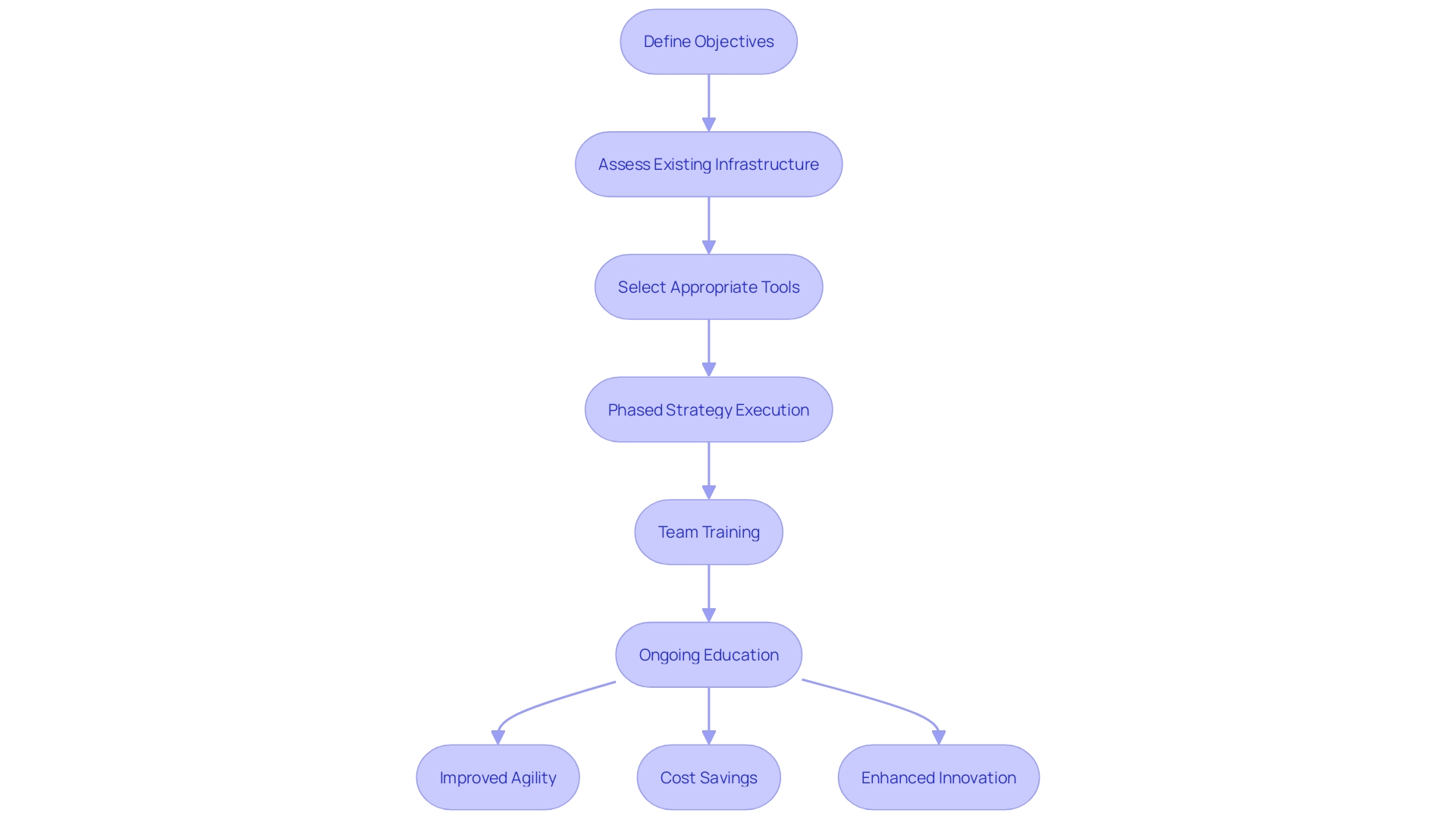
Best Practices for Cloud Orchestration
To enhance the effectiveness of cloud management, it is essential for organizations to follow established best practices. Comprehensive documentation ensures that every aspect of the orchestration process is transparent and accessible. Regular workflow reviews are crucial for maintaining alignment with evolving business goals and technological advancements. Implementing robust security measures safeguards sensitive data and maintains compliance with industry standards.
Continuous monitoring and feedback loops play a pivotal role in identifying inefficiencies and areas for improvement. These mechanisms allow entities to adapt quickly to changing conditions and enhance overall system performance.
Fostering collaboration between development and operations teams is equally important. This synergy, often referred to as DevOps, ensures that all stakeholders are aligned and working towards common objectives. By utilizing the combined knowledge of development and operations, organizations can simplify the coordination process, leading to more efficient and dependable online operations.
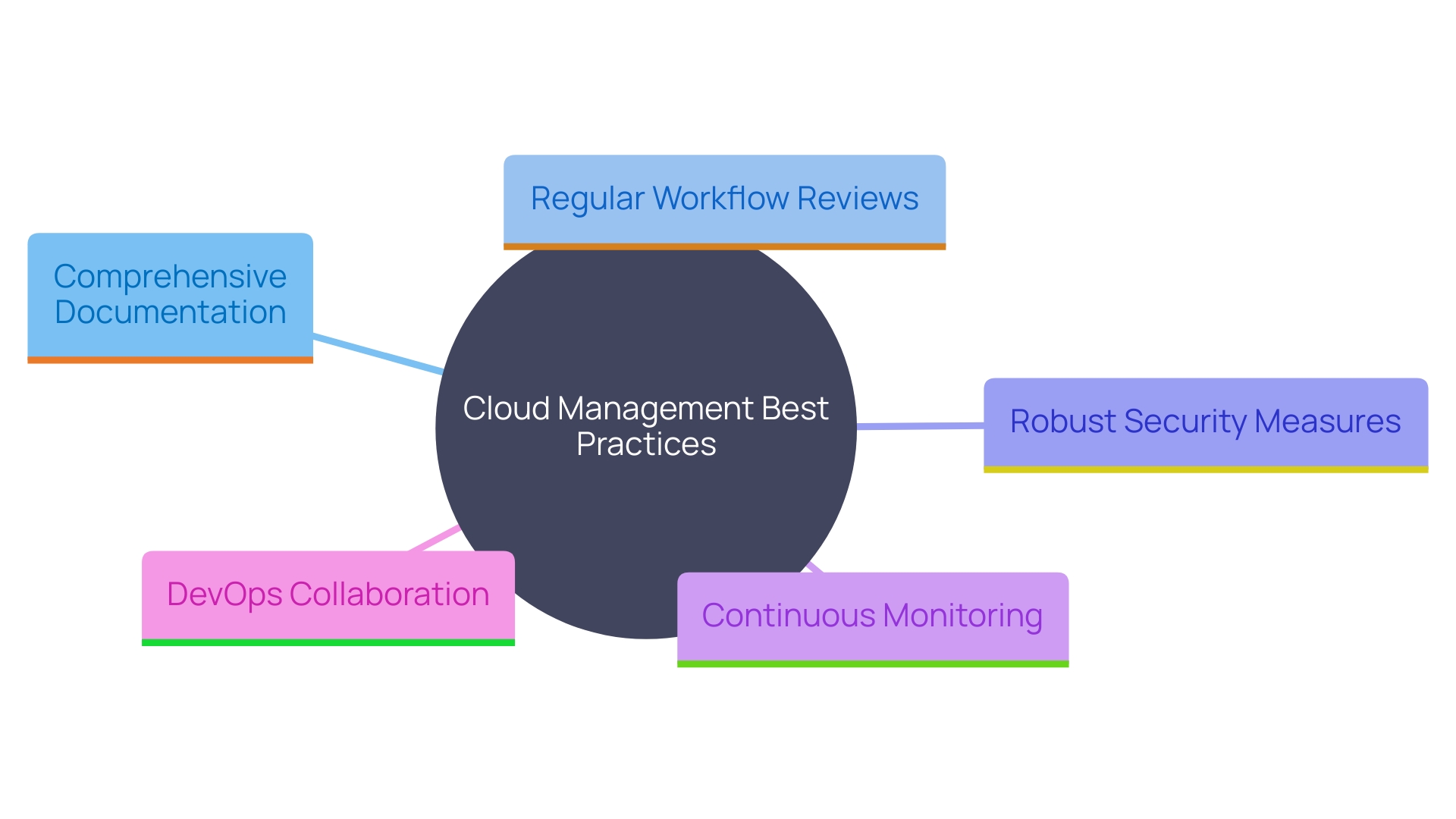
Overcoming Challenges in Cloud Orchestration
Organizations face numerous challenges when implementing cloud management, including integration complexities, skill gaps, and resistance to change. For instance, Delivery Hero faced significant hurdles managing access issues for its vast workforce, which often led to employees being locked out and unable to work. By adopting an innovative IT service delivery strategy, the company drastically reduced downtime and improved efficiency.
Addressing such issues involves comprehensive training and development programs to bridge skill gaps. As noted by Satyendra Kumar, adopting a multiprovider, multipartner strategy and fostering early collaboration beyond organizational boundaries is essential. This holistic approach ensures that all stakeholders are aligned and can tackle integration complexities effectively.
Moreover, selecting intuitive and user-friendly tools can mitigate resistance to change. Chess.com, for example, achieved seamless coordination of its IT infrastructure, enhancing user experience for its global audience. James Kelty, Head of Infrastructure at Chess.com, emphasized the importance of a stable and expansive IT framework to support daily operations and user engagement.
Promoting a culture of innovation is also crucial. Proactive change management strategies can facilitate this transition, as highlighted by Kevin Scott's emphasis on unified coordination mechanisms at Microsoft. Such strategies assist entities in navigating the cultural shifts that accompany new technologies, ensuring smoother adoption and operational success.
Future Trends in Cloud Orchestration
'The future of cloud management is poised for substantial growth, propelled by swift progress in artificial intelligence (AI), machine learning (ML), and improved automation capabilities.'. As more organizations adopt multi-cloud strategies, management tools will need to evolve, offering sophisticated functionalities that provide greater flexibility and control.
'With the rise of serverless computing and microservices architectures, coordination practices will be further influenced, compelling enterprises to adapt swiftly.'. According to Gartner's research, companies that embrace APIs and modern orchestration tools saw an impressive 12.9% surge in market capitalization. This underscores the pivotal role these technologies play in enhancing financial performance and overall enterprise value. Gartner's insights emphasize that these tools are not just for tech giants but are becoming essential for all enterprises aiming for digital transformation.
Moreover, new developments such as Amazon's palm recognition identity service and Amazon S3 Express One Zone highlight the ongoing trend towards simplifying operations and improving data accessibility. These innovations are designed to help businesses manage data at any scale while ensuring fast, efficient access, which is crucial for maintaining competitive advantage in a rapidly evolving technological landscape.
Industry experts, including those from Parallels, predict that the technology landscape will continue to undergo remarkable transformations. As we move into the future, it is clear that the infrastructure enabling productivity will be crucial. Therefore, staying ahead of these trends is not just beneficial but essential for maintaining a strategic edge in the market.
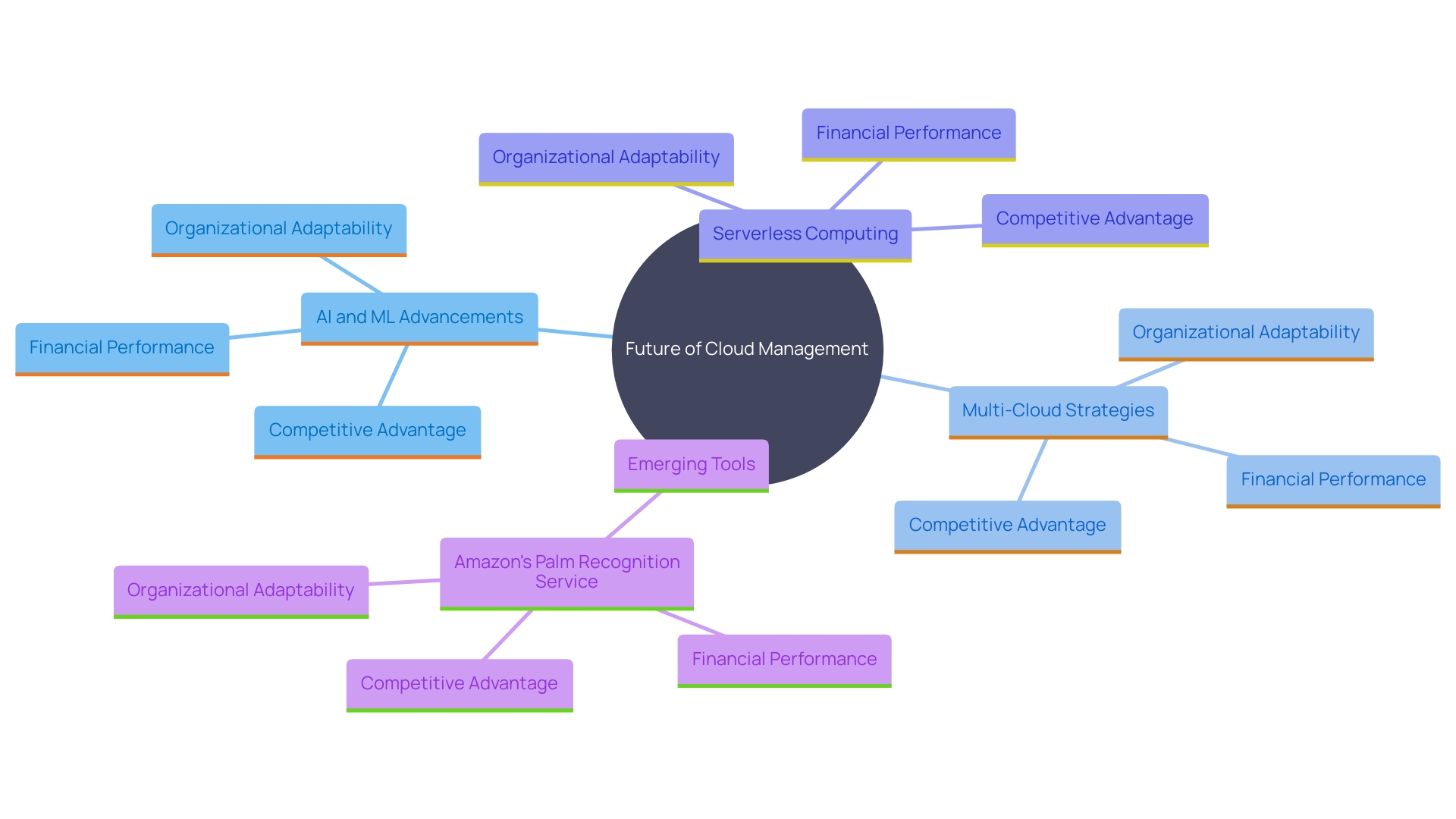
Conclusion
The exploration of cloud automation and orchestration reveals their transformative impact on modern IT operations. Cloud automation enhances operational efficiency by reducing manual intervention, allowing organizations to swiftly deploy resources while minimizing errors. This capability not only streamlines routine tasks but also enables businesses to concentrate on strategic initiatives that foster innovation and growth.
The case of Specsavers exemplifies how aligning cloud investments with business objectives can unlock the full potential of cloud adoption.
Cloud orchestration emerges as a critical component in managing automated tasks across diverse environments, ensuring seamless integration and cooperation among services. The success story of Chess.com illustrates the importance of orchestration in maintaining a robust IT infrastructure that scales effectively to meet user demands. As the cloud computing market continues to grow significantly, organizations that embrace orchestration can streamline operations and maximize their return on investment.
Implementing cloud orchestration requires a well-defined strategy, careful selection of tools, and a phased approach to execution. By prioritizing training and building a knowledgeable team, organizations can navigate the complexities of orchestration effectively. Adhering to best practices, such as fostering collaboration and maintaining rigorous security measures, further enhances the efficacy of these solutions.
As the landscape of cloud orchestration evolves, organizations must remain vigilant in addressing challenges and adapting to emerging trends. The integration of AI and machine learning, along with the rise of multi-cloud strategies, will shape future orchestration practices. Embracing these advancements is essential for organizations aiming to maintain a competitive edge in an increasingly digital world.




